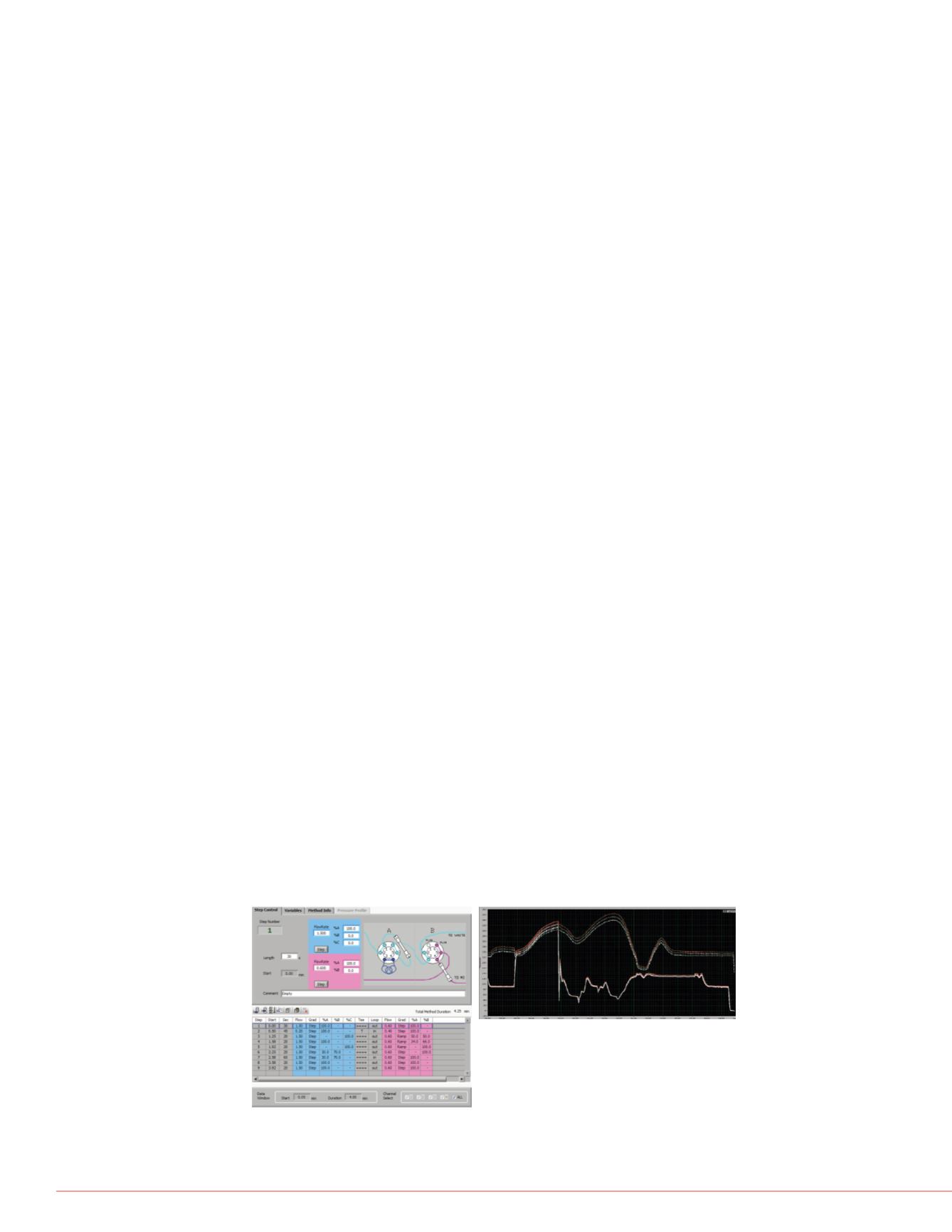

2
A Novel On-Line Sample Cleanup and Liquid Chromatography Platform for LC/MS Analysis in the Clinical Research Laboratory
Overview
Purpose:
Describe a reliable and rugged sample preparation liquid chromatography
system - Prelude SPLC™ - which utilizes novel pumps and fluidics configuration to
multiplex two channels, for high-throughput LC-MS applications.
Methods:
TurboFlow™ on-line extraction coupled to high efficiency HPLC utilizing core
enhanced technology prior to tandem mass spectrometry were optimized for
measuring immunosuppressant drugs, drugs of abuse and steroidal compounds.
Results:
Typical throughput was 20 samples per hour while conserving consumables
and minimizing user intervention. Quality-control (QC) sample results from three
different Prelude SPLC systems operated at three different locations typically varied by
less than ten percent coefficient of variation (%CV).
Introduction
Clinical research and forensic toxicology laboratories have a need for rapid and
reproducible methods automated by systems that are easy-to-use and maintain. We
describe a new system, which encompasses a novel HPLC pump design and fluidics
configuration, enabling the user to perform on-line sample cleanup using TurboFlow
technology and high-performance liquid chromatography (HPLC) on two channels
multiplexed to a mass spectrometer (MS). Reproducibility, linearity, and other
performance data are discussed. Several applications (immunosuppressant drugs
(ISDs), pain management drugs (PMDs), 25-OH-vitamin D and various steroids in
blood) have been satisfactorily tested. They displayed significantly reduced solvent
consumption and shortened run times with reproducible results.
Methods
Sample Preparation & Liquid Chromatography
A Prelude SPLC system (Thermo Scientific) processed 20 uL injections of supernatants
from protein-precipitated samples using a Cyclone-P™ TurboFlow column, transferred
extracted analytes to an Accucore™ PFP HPLC column (2.1 x 50 mm) in which the
analytes were separated, and then eluted to the MS system.
Mass Spectrometry
A TSQ Vantage™ tandem mass spectrometer (MS/MS) with heated electrospray ion
(HESI-II) source (Thermo Scientific) was used for selective reaction monitoring (SRM)
of analytes.
System Control & Data Analysis
TraceFinder™ 2.1 software was used to control the SPLC-MS system and to collect
and process the MS/MS data.
System Suitability
A rigorous LC-MS/MS testing protocol was designed to determine inter- and intra-
system precision and ruggedness of the system (Figure 1). Using a test mix of four
compounds - Atenolol, Warfarin, Lidocaine and Imipramine, in both aqueous and
plasma matrices, both channels on multiple Prelude SPLC systems were tested.
%RSD values were generated for peak areas as well as retention times across
channels and across systems.
FIGURE 1. SPLC System Suitability Method and Representative Pressure Trace.
FIGURE 2. 500 Matrix Injection
over 34 hrs of run time!
Results
Whole-System Testing Verified
To simulate a typical bio-analytic
mixed with a 3-fold volume of ac
and ruggedness of the SPLC-MS
supernatant, which had a duratio
each compound were reproduci
smoothing or internal-standard c
(Figure 3).
FIGURE 4. Retention Time Drift
FIGURE 5. Pressure Trace Ove
Pressure and Retention Times
While the reproducibility of raw a
its impact on data, the burden of
the SPLC system and its column
drift, pressure trace drift and pea
set. As shown by Figures 4, 5 &
were remarkably stable througho
Solvents:
A
: Water + 10 mM ammonium formate + 0.05% formic acid
B
: Methanol + 10 mM ammonium formate + 0.05% formic acid
C
: 45% acetonitrile + 45% isopropanol + 10% acetone
0
1
2
3
4
Time (min)
0
10
20
30
40
50
60
70
80
90
100
Relative Abundance



















